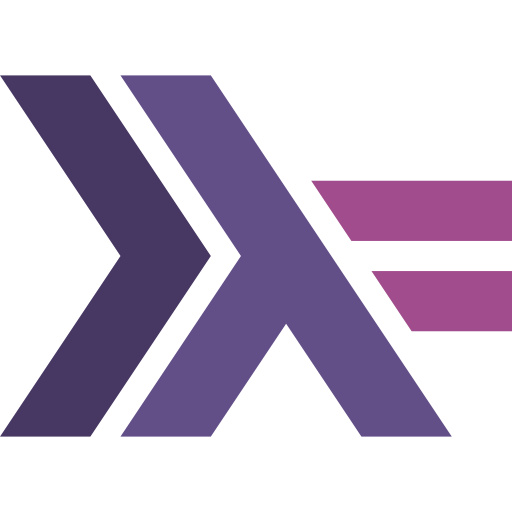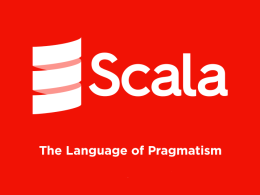Cardano is a blockchain platform that has made a name for itself due to its unique approach to scalability, security, and sustainability. The secret sauce behind Cardano’s success?
Haskell, a functional programming language that has proven to be an excellent choice for building a robust and reliable blockchain platform. In this article, we’ll dive deep into Haskell’s key features and explore why it’s a perfect fit for blockchain development, using Cardano as a prime example.
We will also be comparing the Haskell Code to Python, and while the difference might be a little harder to spot than using JS or other languages, Python is a much easier language to read and understand.
Haskell: A Functional Programming Language for Complex Systems
Haskell is a functional programming language, which means that it focuses on using functions to transform data, rather than relying on mutable state or objects. This paradigm is known for its ability to express complex ideas in a clear, concise manner. Haskell is especially famous for its purity, meaning that functions don’t have side effects, making it easier to reason about the code and predict its behavior.
-- Haskell example of a pure function
add :: Int -> Int -> Int
add x y = x + y
In this simple example, the add function takes two integers as input and returns their sum. There are no side effects, and the result is solely determined by the input values.
Now let’s look at how that’s done in Python
# Python example of a pure function
def add(x, y):
return x + y
Both Haskell and Python examples are pure functions, and there is no significant difference in this case. However, Haskell’s purity is enforced by the language, making it easier to reason about the code and predict its behavior, which is not the case in Python.
In Python, you might inadvertently introduce side effects into the add function:
global_counter = 0
def add(x, y):
global global_counter
global_counter += 1
return x + y
This Python function has a side effect of updating a global counter each time it’s called, which can introduce hard-to-find bugs. In Haskell, due to enforced purity, side effects like this would be caught at compile time, ensuring that the function remains pure.
The Power of Haskell’s Strong Type System
One of the key benefits of Haskell is its strong, static type system. This means that the types of values and functions are determined at compile time, ensuring correctness and reliability in the code. In the context of a blockchain like Cardano, the integrity of the system depends on the accuracy and safety of the code, making Haskell’s strong type system a perfect fit.
For example, let’s take a look at a basic function to calculate the balance of a user’s account:
haskellCopy code-- Haskell type signature
balance :: [Transaction] -> UserId -> Integer
In this example, the balance function takes a list of transactions and a user ID as input and returns the balance as an integer. Haskell’s type system guarantees that the function will always produce an integer, ensuring that the balance calculation is reliable and free from runtime type errors.
Python:
# Python example without a strong type system
def balance(transactions, user_id):
# Implementation details
pass
In Python, the types of values and functions are determined at runtime, which can lead to runtime type errors. In contrast, Haskell’s strong, static type system guarantees that the function will always produce an integer, ensuring that the balance calculation is reliable and free from runtime type errors.
In Python, you might accidentally pass an incorrect type as an argument to the balance function:
user_balance = balance("invalid_transactions_list", user_id)
This mistake would only be caught at runtime, potentially causing crashes or unexpected behaviour. In Haskell, the strong type system would catch this error at compile time, preventing the program from being compiled with this issue.
High-Level Abstractions: Concise, Expressive Code
Another reason Haskell is well-suited for blockchain development is its high-level abstractions, which enable developers to write concise, expressive code that is easy to reason about. This is particularly important in complex systems like a blockchain, where simplicity and clarity are crucial for understanding the inner workings of the platform.
For example, let’s look at a function that filters out transactions based on a specific criterion:
haskellCopy code-- Haskell example using high-level abstractions
filterTransactions :: (Transaction -> Bool) -> [Transaction] -> [Transaction]
filterTransactions predicate transactions = filter predicate transactions
In this example, the filterTransactions function takes a predicate function (a function that returns a boolean value) and a list of transactions. It filters out transactions based on the given criterion, using the built-in filter function. This concise, expressive code allows for easy understanding and reasoning about the behavior of the function.
Python:
# Python example using high-level abstractions
def filter_transactions(predicate, transactions):
return list(filter(predicate, transactions))
Both Haskell and Python have good support for high-level abstractions. However, Haskell’s functional paradigm and purity make it easier to reason about the code and avoid potential issues related to mutable state or side effects, which can be more challenging to manage in Python.
Suppose you have a Python function that accepts a list of transactions and a predicate function. The goal is to filter the transactions based on the predicate and return a new list without modifying the original list:
def filter_transactions(predicate, transactions):
return [transaction for transaction in transactions if predicate(transaction)]
Now, imagine you have a list of transactions, and you want to filter out transactions that have an amount greater than a certain threshold:
transactions = [
{"id": 1, "amount": 100},
{"id": 2, "amount": 50},
{"id": 3, "amount": 200}
]
def amount_greater_than_100(transaction):
return transaction["amount"] > 100
filtered_transactions = filter_transactions(amount_greater_than_100, transactions)
So far, everything works as expected. However, what if you were to accidentally mutate the transactions list elsewhere in your code?
def some_function(transactions):
transactions[0]["amount"] = 500
some_function(transactions)
After calling some_function, the transactions list has been mutated, and the first transaction now has an amount of 500. Since filtered_transactions was created before this mutation, it still has the original data.
However, imagine a scenario where the filtering function is called after the mutation:
some_function(transactions)
new_filtered_transactions = filter_transactions(amount_greater_than_100, transactions)
In this case, new_filtered_transactions will contain the mutated transaction, which might not be the intended behavior. The issue here is the side effect caused by the mutable data structure, which can lead to subtle bugs in the code.
In contrast, Haskell’s functional approach and immutability of data structures make it less prone to these issues. In Haskell, once a list is created, it cannot be changed. Instead, you create a new list with the desired modifications, which prevents unintentional side effects related to mutable state.
Defining Functions in Terms of Other Functions: Recursion
One of the things that makes Haskell code so powerful is the ability to define functions in terms of other functions. This is particularly evident in the case of recursive functions, which are functions that are defined in terms of themselves. For example, consider the classic factorial function:
haskellCopy code-- Haskell example of a recursive function
factorial :: Integer -> Integer
factorial 0 = 1
factorial n = n * factorial (n - 1)
In this example, the `factorial` function is defined in terms of itself. The base case is when the input is 0, in which case it returns 1. For any other positive integer `n`, it calculates the factorial by multiplying `n` with the factorial of `n — 1`.
This elegant, recursive definition allows us to handle complex calculations with ease.
Python:
# Python example of a recursive function
def factorial(n):
if n == 0:
return 1
else:
return n * factorial(n - 1)
Both Haskell and Python examples define the factorial function using recursion. The key difference lies in Haskell’s conciseness and pattern matching, which allows for more elegant and readable code. Additionally, Haskell can leverage tail call optimisation for certain recursive functions, improving performance.
In Python, you might inadvertently introduce an infinite loop in the factorial function:
def factorial(n):
if n < 0:
return "Error: Negative input"
elif n == 0:
return 1
else:
return n * factorial(n) # Infinite loop for positive n, as it doesn't decrement
This mistake would cause an infinite loop and a crash when called with a positive integer. In Haskell, the pattern matching and clear recursion structure make it less likely for such errors to occur. Additionally, Haskell can leverage tail call optimization for certain recursive functions, improving performance.
Writing Concise, Elegant Code for Complex Calculations Haskell’s functional paradigm, strong type system, and high-level abstractions make it an excellent choice for writing concise, elegant code that can handle complex calculations with ease.
This is particularly important in the context of blockchain platforms like Cardano, where the correctness and efficiency of the underlying code can have a significant impact on the performance and security of the system.
Consider the following example of calculating the total amount of rewards distributed in a blockchain network:
haskell - Haskell example of calculating total rewards
totalRewards :: [Reward] -> Integer
totalRewards rewards = sum $ map rewardAmount rewards
In this example, the totalRewards function takes a list of rewards and calculates the total amount by mapping the rewardAmount function over the list and then summing the results. This concise, functional approach to handling complex calculations is a key reason why Haskell is such an excellent choice for blockchain development.
Python:
# Python example of calculating total rewards
def total_rewards(rewards):
return sum(map(lambda r: r.reward_amount, rewards))
While both Haskell and Python examples showcase concise code for handling complex calculations, Haskell’s functional approach and purity provide better guarantees for correctness and maintainability. The lack of mutable state and side effects in Haskell makes it easier to reason about the code and predict its behavior.
In Python, you might accidentally pass a list of rewards with different types or missing attributes, causing runtime errors:
coderewards = [{"reward_amount": 100}, {"reward": 50}, {"reward_amount": 200}]
total = total_rewards(rewards)
This mistake would result in an error during runtime, as the second item in the list has the incorrect attribute name. In Haskell, the strong type system and enforced purity would catch this error at compile time, preventing the program from being compiled with this issue.
Haskell, the Perfect Choice for Cardano and Beyond
In summary, Haskell is a fantastic choice for building the Cardano blockchain (and other complex systems) because of its strong type system, expressive abstractions, and ability to handle complex systems. The functional programming paradigm, combined with high-level abstractions, allows developers to write clear, concise, and elegant code that is easy to reason about and maintain.
Haskell’s strong type system ensures the correctness and reliability of code, which is especially important for platforms like Cardano, where the integrity of the system depends on the accuracy and safety of the underlying code.
While Haskell might have a steeper learning curve compared to some other programming languages, its unique features and advantages make it well worth the investment for developers looking to build robust, secure, and scalable systems like blockchain platforms.
So, whether you’re diving into the world of blockchain development or just exploring new programming languages, Haskell is a powerful tool to have in your arsenal. Its unique blend of expressiveness, safety, and elegance makes it an ideal choice for tackling complex problems and building the next generation of innovative solutions.










